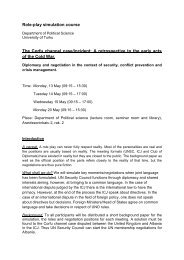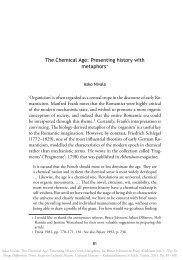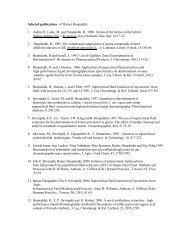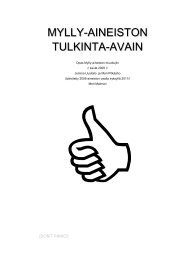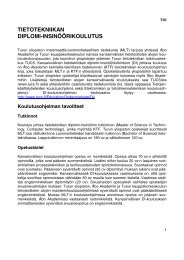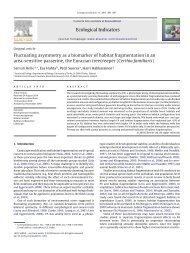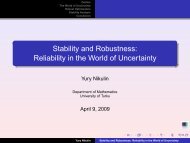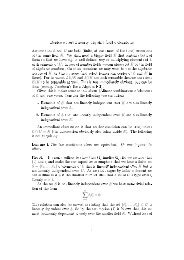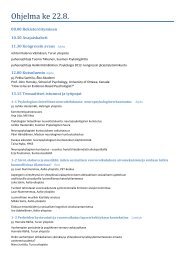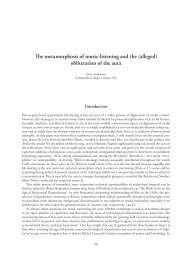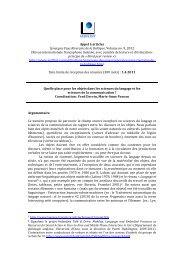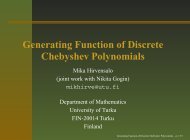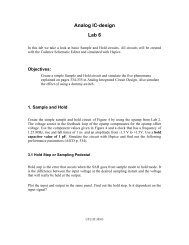MIRHAMI 2030 “Future Images of Food Consumption", Phase
MIRHAMI 2030 “Future Images of Food Consumption", Phase
MIRHAMI 2030 “Future Images of Food Consumption", Phase
Create successful ePaper yourself
Turn your PDF publications into a flip-book with our unique Google optimized e-Paper software.
SECTION I: INTRODUCTION 13<br />
Mirhami <strong>2030</strong><br />
Market reports (Euromonitor, our previous works on consumer behavior, retail trade, food<br />
safety issues etc.) were also used.<br />
Seminar and fair outcomes, food advertising, promotion<br />
1.2.5 The methodology used in India<br />
Expert Interviews<br />
Potential interviewees were collected in September. Based on earlier contacts, our existing<br />
network and desktop work we compiled a long list <strong>of</strong> interviewees. Out <strong>of</strong> that list the most<br />
interesting candidates were contacted and their initial interest in contributing to the research<br />
asked. A list <strong>of</strong> candidates – with those willing to participate at the beginning <strong>of</strong> the list – was<br />
submitted to the Finland Futures Research Center on September 19, 2006.<br />
In October Delhibased candidates were contacted for a testinterview. Due to the peak holiday<br />
season the first testinterview could be scheduled only for 30 th October. The other interviews<br />
took place during November and December 2006 and in January 2007.<br />
Observation <strong>of</strong> Phenomena<br />
The other part <strong>of</strong> the data collection until included Finpro India’s observations on the current<br />
trends. Articles from newspapers and magazines have been collected, statistics studied and<br />
research papers read. In addition, we have been observing food advertising along with eating<br />
and shopping habits <strong>of</strong> the people. Discussions on these issues have been carried out.<br />
Observations have mainly been restricted to metropolitan cities, especially to New Delhi and to<br />
some extent Chennai and Mumbai.<br />
Some articles and magazines collected during the observation will be sent by courier.<br />
1.2.6 The methodology used in Japan<br />
Interview candidates were selected from food related government, governmental organizations,<br />
industry organizations, and opinion leaders. Japan took the “generalized” versus specific<br />
approach as the interviews proceeded. The candidate search was through collecting<br />
information from food related books, magazines, and publishes theses. Many <strong>of</strong> the<br />
interviewees approached, although qualified in the literature search, referred Japan to other<br />
experts. The final outcome was three extensive interviews with government agencies<br />
conducted in person.<br />
Mr. Tatsuji Koizumi, Policy Research InstituteMinistry <strong>of</strong> Agriculture, Forestry and Fisheries<br />
Japan.<br />
Mr. Takao SikineChief Researcher Management Director<strong>Food</strong> Marketing Research &<br />
Information Center.<br />
Mr. Fujino and Mr. Maekawa Agriculture & Livestock Industries Corporation.<br />
The report indicates several other contacts that were unable to answer.<br />
The study was supplemented by extensive and interesting phenomena related to food which is<br />
summarized in the report. These phenomena include Shokuiku<strong>Food</strong> Education and the “Basic<br />
Law on Shokuiku”.<br />
© Finpro & Finland Futures Research Centre




